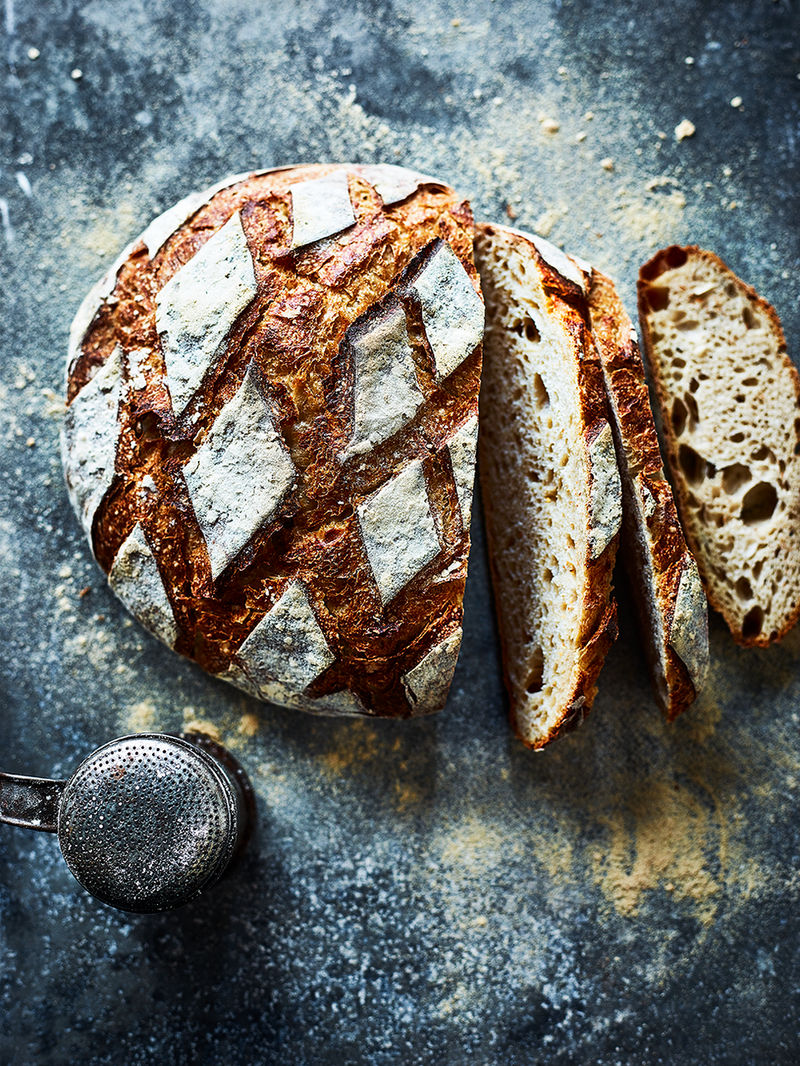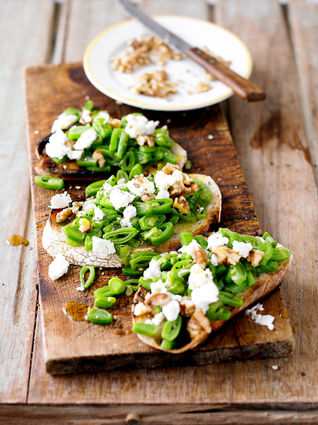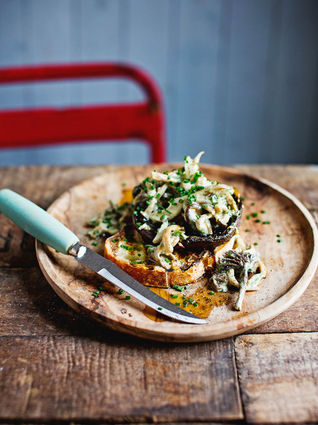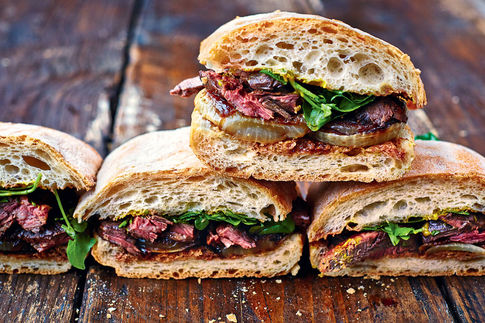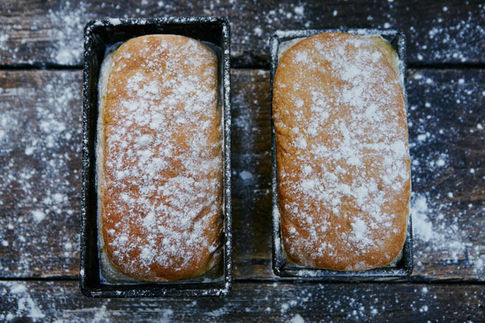White sourdough
Perfect with smashed avo & poached eggs
White sourdough
Perfect with smashed avo & poached eggs
“This recipe uses a levain (a dedicated quantity of well-fed starter). You'll need a 1kg banneton or proving basket, and a bench scraper. A disposable plastic shower cap is also a handy piece of kit, brilliant for covering bowls of dough or proving loaves, as they are easily removed and aren’t as restrictive as clingfilm. ”
Makes 1 loaf
Cooks In1 hour 15 minutes plus proving
DifficultyNot too tricky
Nutrition per serving
-
Calories 185 9%
-
Fat 0.8g 1%
-
Saturates 0.2g 1%
-
Sugars 0.6g 1%
-
Salt 1.25g 21%
-
Protein 6g 12%
-
Carbs 40.8g 16%
-
Fibre 2g -
Of an adult's reference intake

Recipe From
Jamie Magazine
By Annie Rigg
Tap For Method
Ingredients
- 450 g organic strong white flour , plus extra for dusting
- 50 g organic white rye flour , or white spelt flour
- 1-2 tablespoons rice flour
- 1-2 tablespoons semolina or fine polenta
- LEVAIN
- 80 g active starter
- 80 g organic strong white flour
Tap For Method
The cost per serving below is generated by Whisk.com and is based on costs in individual supermarkets. For more information about how we calculate costs per serving read our FAQS

Recipe From
Jamie Magazine
By Annie Rigg
Tap For Ingredients
Method
- Make the levain the night before, just before going to bed. Combine the levain ingredients in a bowl with 80g of water and beat until smooth. Cover with clingfilm and leave overnight, at room temperature, until the mixture is bubbly.
- The next morning, combine the strong white flour and rye or spelt flour in a large bowl, and make a well in the centre. Add the levain and 300ml of cool water.
- Mix with a rubber spatula or wooden spoon for a couple of minutes until thoroughly combined and no lumps remain. Cover and set aside for 20 to 30 minutes to let the flour absorb the water and become hydrated.
- Grind 15g sea salt in a pestle and mortar and add to the dough. Using wet hands, mix to combine, then turn out onto a clean work surface and knead for 10 minutes using the ‘slap and fold’ technique: pick up the dough in both hands, flip it and slap it onto the work surface, letting the full weight of it drop – the dough will stick to the surface. Working quickly, pull and stretch the dough from the far end towards you, then fold it in half away from you. Pick up the dough again, turn it anti-clockwise, and repeat. Continue this action for 10 to 15 minutes – the dough will be silky smooth, elastic and no longer sticky. Do not be tempted to add more flour during the kneading process.
- With the help of the bench scraper, scoop the dough up and return it to the bowl, rounded-side-up. Cover loosely with clingfilm or a shower cap and leave at room temperature, in a draught-free spot, for about 1 hour, or until the dough looks smooth and airy but has not risen significantly.
- Lightly dust your hands and work surface with flour. Turn out the dough, gently press and stretch it into a rectangle three times as long as it is wide, about 12cm x 40cm.
- With a shorter side closest to you, fold the lower third into the middle, then fold the upper third over the top, giving you a triple-layered square of dough. Rotate it 90 degrees, stretch it out into a rectangle again and repeat the folding steps once more.
- Flip the square of dough over, place it back in the bowl and cover loosely with clingfilm or a shower cap. Leave to prove at room temperature for 4 hours.
- Turn the dough onto a lightly floured work surface. Pull the top edge into the centre, turn the dough a quarter of a turn and repeat – do this 5 or 6 times until it becomes smooth. Flip it over, cover with an upturned bowl and set aside for 10 to 15 minutes.
- Place the rice flour in a bowl with an extra tablespoon of strong flour. Line a banneton or proving basket with a clean linen towel and dust with the flour mixture – this ensures that the dough won’t stick to the sides of the basket.
- Use the palms of your hands to shape the dough into a tight round, seam-side down. Twist the dough anti-clockwise, without lifting it or knocking out any air – you want to keep the ball neat and tight. Dust with flour and use the bench scraper to lift and turn it over.
- Place in the basket, seam-side-up, cover with a shower cap and leave to prove at room temperature for 4 hours, by which time it will have risen by nearly half again.
- Place the basket of dough in the fridge overnight to prove. The next morning, the dough should be almost to the top of the basket and, when pressed with the tip of your finger, will slowly bounce back, leaving a small indent.
- Preheat the oven to 240ºC/475ºF/gas 9 and place a cloche baking dome, Dutch oven or large, lidded cast-iron casserole dish inside. Leave the oven to heat up for 30 minutes or so.
- Remove the dough from the fridge, dust with semolina or polenta and carefully turn out the loaf into the cloche or casserole. Working quickly, use a lame to slash a pattern into the top of the loaf. Cover with the lid and bake for 40 minutes, then remove the cover, reduce the oven to 220ºC/425ºF/gas 7 and bake for another 20 minutes. Leave to cool on a wire rack.

Recipe From
Jamie Magazine
By Annie RiggRelated video
© 2024 Jamie Oliver Enterprises Limited
© 2024 Jamie Oliver Enterprises Limited
